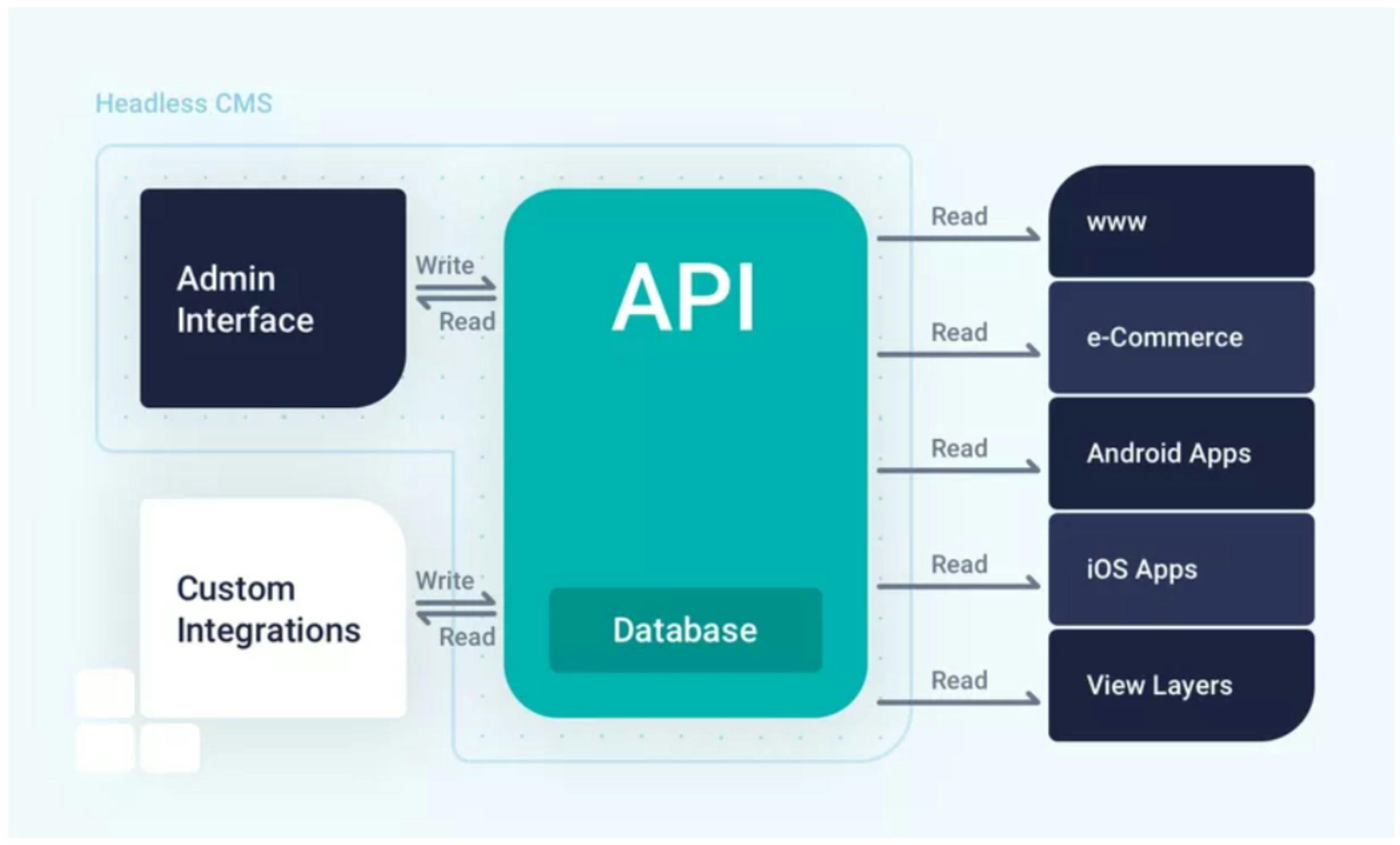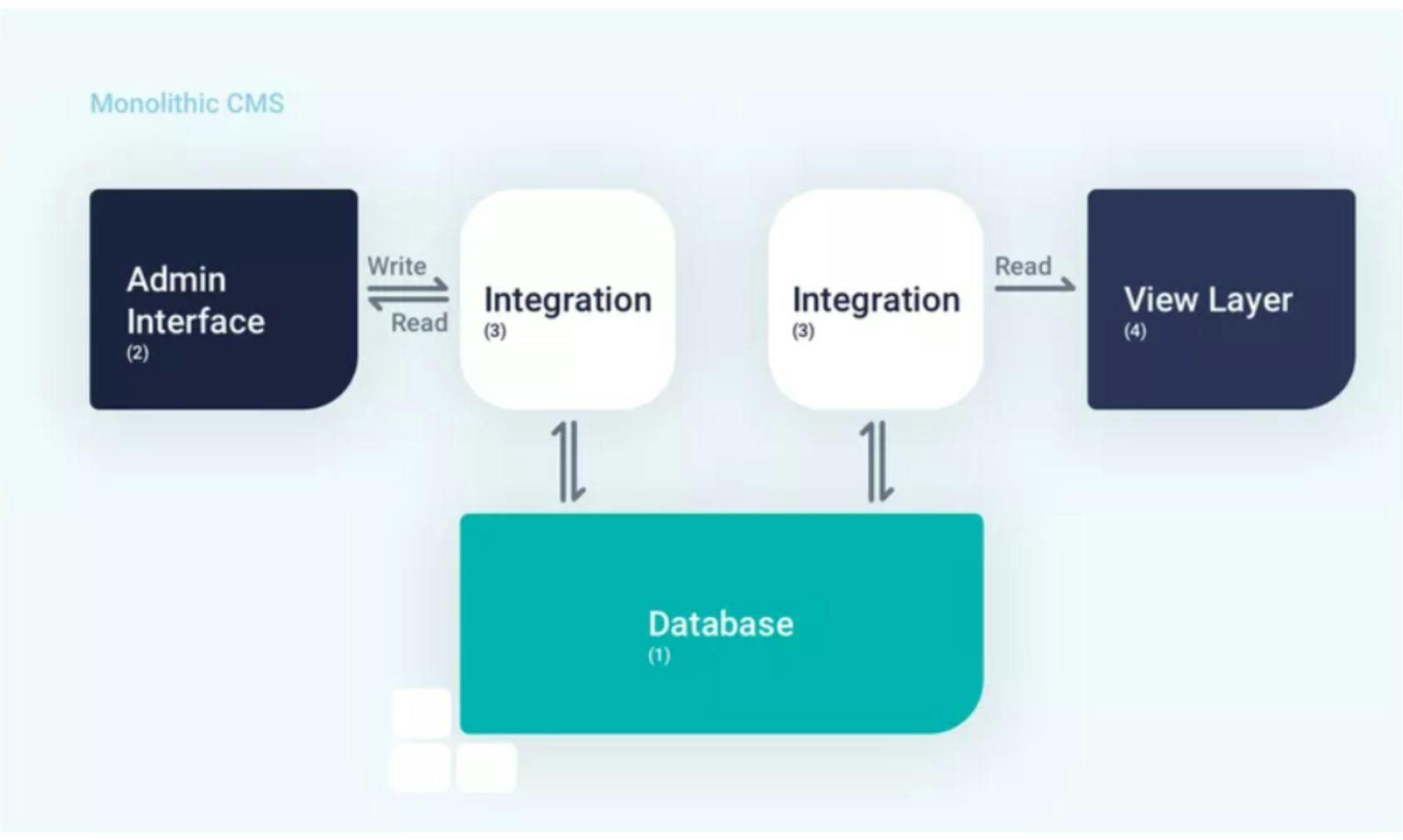Headless CMS The benefits of a headless CMS
Headless CMSs are increasingly becoming the focus of the digital marketing and business industry. But what is a headless CMS? And what added value does it offer companies? In this blog post, we'll explain to you what exactly a headless CMS is, what advantages it can offer your company, and what added value it provides.

- Be prepared for the future with a headless CMS
- What is a Headless CMS
- The difference between a Headless CMS and a traditional CMS
- What are the concrete advantages of a Headless CMS?
- The five most important advantages of a Headless CMS at a glance
- Is a Headless CMS suitable for my company?
- Conclusion about the advantages of a Headless CMS
- Take your content management to the next level now - get in touch with us
Be prepared for the future with a headless CMS
In today's world, you need a modern website that is flexible enough to respond to future needs. It must be optimized for users and search engines and interact with different systems.
Customer demands are increasing, as are the variety of communication channels and the possibilities to market products or services. Therefore, there is no way around a headless CMS.
What is a headless CMS?
With a modern headless CMS, the frontend (head), i.e. the visible part of a website, is decoupled from the backend. The content stored in the backend, such as text, images or videos, is now transferred to the frontend via an interface such as RestAPI or GraphQL.
With the same headless CMS and the newly integrated interface, multiple websites, apps or even smart devices like an Apple Watch can now be managed simultaneously. The focus is on the content and not on the structure of the respective website or app.
The difference between a headless CMS and a traditional CMS.
The Headless CMS
What is new with a headless CMS is the interface (API). Through this, the content such as images, texts or videos can be provided in a structured way for all kinds of electronic devices or websites. The following graphic from Storyblok gives you an overview.
It doesn't matter which systems the smart devices, websites or apps are based on or which programming language is used to create them. No matter which end devices, the API interface can prepare the data correctly.

The traditional CMS
In a traditional CMS, the backend (database, admin interface) forms a unified system with the frontend (the website).ith this so-called monolithic CMS does not allow to play different communication channels. The content has to be prepared again and again and managed in different systems, which is very time-consuming and error-prone. The following graphic shows you how a traditional CMS is structured.

What are the specific benefits of a headless CMS
A headless CMS can serve different frontends (website, apps, etc.)
Content and information can be easily prepared and delivered for different systems, platforms or devices. Thus, managing the content for different channels only needs a single headless CMS. Thanks to the API, the data can be accessed from anywhere.
Frontends can be easily replaced
New websites, apps or other electronic devices or systems can be easily added or replaced. It doesn't matter what technologies they are based on.
Faster loading times
Only the specific content is loaded at the end user, resulting in massively faster loading times.
Content is equally up-to-date on all devices
No matter which device the customer uses to consume the content, they see the same up-to-date content on all devices they use. This ensures brand consistency and provides customers with an up-to-date omnichannel experience.
Save time and get to market faster
Content adjustments can be made quickly and updated simultaneously on all devices. One minimizes the effort of possible redesigns or product adjustments. In addition, developers no longer have to worry about different systems.
Costs are reduced
With the reduction of the effort for content preparation and the management of the IT landscape, costs are naturally saved.
In addition, you have the freedom to choose which technologies you want to work with, since the API interface is compatible with all technologies. Only the tools that are needed have to be purchased.
More security
A headless CMS is decoupled from all frontends through the API interface. If a problem occurs on one device, it does not affect the rest. These isolated issues pose much less risk and are much easier to control.
The five most important advantages of a headless CMS at a glance.
Populate different communication channels with the same content.
Reduce your costs through efficient content management.
Offer your customers an always up-to-date omnichannel experience.
Get more security through a modern IT environment.
Implement your ideas and innovations faster.
Is a headless CMS suitable for my company?
When choosing a CMS, it always depends on the individual goals and requirements, of course. But even if a traditional CMS is still sufficient today, you should not lose sight of the rapid developments. It could be that in a few years a traditional CMS will no longer meet the needs and requirements of your customers.
The advantages of a headless CSM for large projects
It definitely makes sense to opt for a headless CMS if you want to act faster and more flexibly in the future and play out the content on different communication channels. A headless CMS is especially suitable if you want to realize large projects and have planned multi-channel marketing.
Due to the advantage of multi-channel capability, websites in PHP, Python or Ruby, JavaScript (React, Vue, Angular), native apps for iOS or Android can be played without any problems.
The advantages of a headless CMS for large editorial teams
The advantages of a headless CMS can be interesting for magazine, blog or newspaper concepts, for example. Editors can concentrate specifically on the creation of content and do not have to worry about the design or layout on the web - in line with the "content first" approach.
In return, frontend developers have complete freedom of design, as they are no longer limited by the technical possibilities.
The advantages of a headless CMS for e-commerce
The advantages of a headless CMS can also be used in e-commerce, as sales are increasingly being made via different channels. In addition to the classic online store, for example, marketplaces such as Amazon or eBay, individual B2B ordering portals or IoT Devices (Internet of Things) can also be used as sales channels.
Through a headless CMS or headless commerce, your e-commerce environment can be massively improved. You are no longer bound to the simple content management system of the respective e-commerce software. Editing the content, managing the product data and processing the transaction can be easily done in the specialized system. It simplifies the work of your marketing team and product managers. You can get products to market faster across all channels.
Conclusion about the advantages of a headless CMS
With a headless CMS you are ready for the future. You can tackle larger projects, launch your products and services more easily across multiple communication channels, and offer your customers an always up-to-date omnichannel experience.
By managing your content efficiently, you can save time, cut costs, be more flexible, and get to market with your products or services much faster and more professionally.
Create only the best for your customers; a delightful content experience, massively faster loading times and high security.
Say goodbye to interface chaos and create a future-oriented IT environment to move your business forward.
Take your content management to the next level now - get in touch with us.
We are specialists in this field and the first, officially certified partners in Switzerland of Storyblok. Storyblok is the top rated headless CMS for creating powerful content experiences on any channel. It's trusted by more than 85,000 developers and marketers.
If you want to take your content management to the next level, get in touch. The Dewave team will be happy to work with you to analyze your needs and goals and find the right headless CMS solution for you.
